Understanding How Lighting Changes An Object
Week 9 was an interesting week going into more detail about the different coloured LEDs and trying to develop an understanding of how different colour temperatures can change the textures and objects within a space in a positive or negative manner.
This reusable coffee cup is made of recycled coffee cups and has a lot of texture of these on the outside of the cup. The blue LED made it very difficult to see these details on the cup and would be an unsuitable way of illuminating the object.
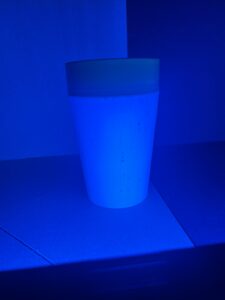
(Blue LED – Josie Lancaster)
The use of the Red/Blue LED made the green at the top of the coffee cup appear a browny dull colour it also again disguised the details in the cup making it an unsuitable luminance for the object.
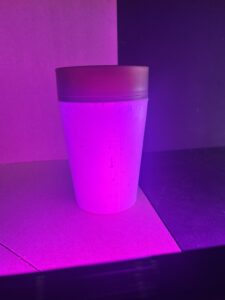
(Red/Blue LED – Josie Lancaster)
The green LED showed the colours in the object more true to what they actually are but did not highlight the detail of the texture in the cup. This would not be a suitable luminance for this object.
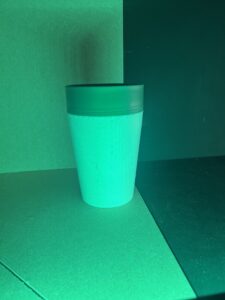
(Green LED – Josie Lancaster)
The warm temperature LED- 2000K made the details in the object slightly more obvious but is still not the best choice for luminance.
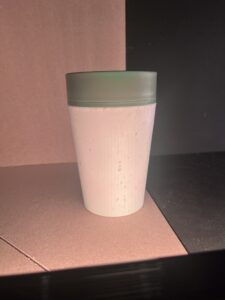
(2000k luminance LED – Josie Lancaster)
The final test was with a 4000K luminance LED which was a much cooler light. This colour temperature showed the colours of the object very true to what they are and also highlight the detail within the object to the best.
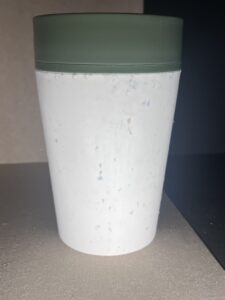
(4000K luminance LED – Josie Lancaster)
This task gave me a valuable insight into the way different colour temperatures can affect what they are illuminating and change the way we see the luminance. This has given me a greater understanding of the importance of lighting.